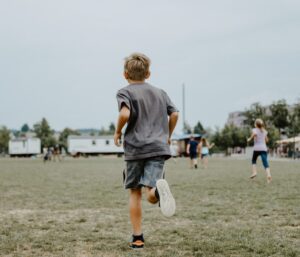As summer approaches, the time to be active is upon us. The last few years, getting out and being active has been extremely difficult due to COVID 19 and the closure of places like sports facilities and gyms. A survey of 14 countries affected by COVID-19 showed that physical activity has been on the decline globally, with over 41% of respondents self-reporting lowered levels of both moderate-to-vigorous physical activity and vigorous physical activity (Wilke et al., 2021). The negative health outcomes of physical inactivity have been known for a long time and include cardiovascular diseases, diabetes, obesity, and premature mortality (Puccinelli et al., 2021). Physical inactivity has been an ongoing national health issue, and the complications of becoming or staying active during the pandemic have only exacerbated the issue. Lowered activity levels during the pandemic have led to a rise in mood disorders such as depression and anxiety (Puccinelli et al., 2021). This is particularly concerning among youth and adolescents – when the puberty years are important for not only physical development but also mental and social development.
 Getting an adequate amount of physical activity is vital for proper and healthy development. The Physical Activity Guidelines for Americans (U.S. Department of Health and Human Services, 2018) recommends 60 minutes or more of moderate-to-vigorous intensity physical activity each day. Each week should include three days of aerobic activities (such as walking or biking), three days of muscle strengthening activities (such as climbing or push-ups), and three days of bone strengthening activities (such as jumping, running, or sports that require quick change in direction). However, the Centers for Disease Control and Prevention (n.d.-a) reports that less than one-quarter of children ages 6 to 17 participate in 60 minutes of physical activity every day.
Getting an adequate amount of physical activity is vital for proper and healthy development. The Physical Activity Guidelines for Americans (U.S. Department of Health and Human Services, 2018) recommends 60 minutes or more of moderate-to-vigorous intensity physical activity each day. Each week should include three days of aerobic activities (such as walking or biking), three days of muscle strengthening activities (such as climbing or push-ups), and three days of bone strengthening activities (such as jumping, running, or sports that require quick change in direction). However, the Centers for Disease Control and Prevention (n.d.-a) reports that less than one-quarter of children ages 6 to 17 participate in 60 minutes of physical activity every day.
Instilling life-long, healthy habits at a young age can carry over into adulthood – leading to higher quality of life. Additionally, there are specifics benefits to children that are a result of physical activity. We will go over the physical and psychological benefits, as well as ways to encourage children to be more active.
Benefits of Physical Activity for Children
The updated “Physical Activity Guidelines for Americans” (U.S. Department of Health and Human Services, 2018) lists both physical and mental health benefits for children associated with physical activity:
- Academic Performance
Physical activity can help improve attention and memory, which can help students with their academic performance. - Brain Health
Physical activity can help lower the risk of mood disorders such as depression. - Muscular Fitness
Physical activity can help with the development of strong muscles and muscular endurance. - Heart and Lung Health
Physical activity can improve both blood pressure and aerobic fitness. - Cardiometabolic Health
Physical activity can maintain a person’s blood sugar levels, which can lower the risk of diabetes. - Long-term Health
Physical activity can reduce the risk of several chronic diseases, including cardiovascular disease and obesity. - Bone Strength
Physical activity can strengthen bones, which is important during the pubertal growth spurt. - Improved Quality of Life
Physical activity can improve overall health and the ability to complete daily tasks of living.
Increasing Activity Levels
Several different interventions were identified by the “Physical Activity Guidelines for Americans Midcourse Report: Strategies to Increase Physical Activity Among Youth” released by the U.S. Department of Health and Human Services (2012). These intervention strategies – such as enhanced physical education, active transportation, and changes to home setting – are still effective today during the current pandemic.
Enhanced Physical Education
Enhanced physical education is a newer approach that aims to increase the time spent being active during PE lessons, add more PE classes to the school curriculum, lengthening the time of PE classes, and meeting the needs of all students – especially those with disabilities. Enhanced PE also emphasizes health-related fitness, which teaches knowledge and skills that are meant to be lifelong.
Active Transportation
Creating opportunities for active transportation to school, such as walking and biking, has been an effective way to increase physical activity – especially when school personnel and parents support and participate in these initiatives.
Camps and Youth Organizations
Camps and youth organizations can offer physical activity opportunities outside of the traditional school setting. There are a wide variety of camps and organizations that have a broad range of activities, meaning there is something out there for everyone! Finding a local summer camp can be a great alternative for youth who are not involved in organized sports.
Role of the Family Unit
Family, such as parents and siblings, are important for supporting active lifestyles amongst youth. Since children usually have their time and schedules structured by their parents and guardians, they have little agency over their exposure to physical activity. Additionally, children rely on parents or guardians for other aspects of physical activity such as transportation to sporting activities and the purchase of sporting equipment. With a supportive family and home setting, children may find it more encouraging to live an active lifestyle.
